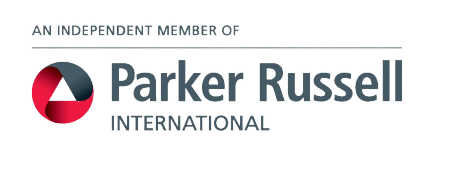Pension contributions to registered pension schemes benefit from tax relief up to certain limits. There are two methods which employers can use to give effect to the tax relief on employee contributions. However, mistakes are often made, and HMRC admit that this may be due to the names given to the reliefs, which are confusing.
In this blog post we take a look at tax relief on pension contributions and net pay v relief at source.
Key dates
Pension contributions deducted from an employee’s pay must be paid over to the pension scheme, together with the employer’s contributions, by the 22nd of the month following that in which the deduction is made where the payment is made electronically. If the payment is made by cheque, it must be made by the 19th of that month.
Pension contributions – two methods
There are two main methods that employers can use to secure tax relief on employee pension contributions:
- net pay arrangements; and
- relief at source.
The employee cannot choose the method of relief and the pension scheme must use the same method consistently.
The default method is the relief at source method; however, an employer can elect at the outset to operate net pay arrangements as long as certain conditions are met. Once a method has been adopted, it cannot be changed.
Regardless of the method used, the employee ultimately receives the same amount of relief – however, the route by which this is achieved is different.
The names given to the reliefs are confusing and easily muddled.
Net pay arrangements
Somewhat counterintuitively, where tax relief is given under a net pay arrangement, an employer will deduct an employee’s pension contribution from their gross pay. By deducting the contribution from the gross pay before calculating tax under PAYE, employees obtain tax relief for their pension contributions at their marginal rate of tax. In this way, they get `full relief at source’; they do not need to claim any further relief through their Self Assessment tax return. For every £100 contribution to the scheme, the employer deducts £100 from the employee’s gross pay and pays it over to the pension scheme. The contribution will cost a basic rate taxpayer £80, a higher rate taxpayer £60 and an additional taxpayer £55 after allowing for the tax relief.
The contribution is only deducted from gross pay for PAYE purposes, not for National Insurance as there is no National Insurance relief on pension contributions.
Relief at source
Under a relief at source scheme, an employer will deduct the pension contribution from the employee’s net pay. The contribution is deemed to be made net of the basic rate of tax. The pension scheme claims back the equivalent of the basic rate on the contributions (i.e. 25% of the contribution) from HMRC’s Pension Scheme Services (PSS).
Contrary to what the name suggests, where the employee is a higher or additional rate taxpayer, the employee does not obtain full ‘relief at source’ on their contribution under a relief at source arrangement. Instead, they must claim the difference between the rate at which they pay tax and the basic rate through their tax return.
For example, where a relief at source arrangement is operated, for every £100 gross contribution to the scheme, the employer deducts £80 from the employee’s net pay and pays it over to the pension scheme. The pension scheme claims back £20 from HMRC (basic rate tax on a gross contribution of £100). If the employee is a higher rate taxpayer they claim an additional £20 through their Self Assessment return, to increase their relief to 40%. Additional rate taxpayers claim an additional £25 to take their rate of relief to 45%.
Common mistakes
Mistakes are easily made where employers confuse the names and may classify a relief at source scheme as a net pay scheme in their payroll and report a relief at source scheme in the RTI net pay data fields. This will mean that tax relief is provided through the payroll and also claimed back by the pension provider (and possibly also by the employee through their Self Assessment tax return), meaning more relief has been given than is actually due. The employer is liable for the tax under deducted and not remitted to HMRC.
Employers who have their pension scheme set up as a net pay scheme in their payroll should check with their pension scheme that this is the method used by the scheme to secure tax relief. If it is not, any errors made reporting pension contributions through RTI should be corrected immediately. Any errors relating to previous periods should be notified to HMRC. This can be done using HMRC’s digital disclosure facility,
Employers who have set up their pension as a relief at source scheme in their payroll should also check that this is correct or employees may not receive the tax relief that they are due.
Mistakes can also arise where contributions are made via a salary sacrifice arrangement under which an employee gives up some of their salary in return for their employer making additional contributions to their pension. In this situation, relief is given through the payroll in a similar way to a net pay scheme.
However, if the contributions linked to the salary sacrifice are reported as employee contributions under a relief at source scheme, the pension scheme will claim additional relief from HMRC. Despite the fact that the employer made the error, it is the pension scheme who is responsible for correcting it and the pension scheme is legally responsible for the overclaimed relief. However, the employer must tell the pension scheme that they have made a mistake and that their report of employee and employer pension contributions is incorrect.
If you would like to speak to a member of our team about your pension contributions or a member of our Financial Services arm to discuss your pension arrangements generally contact us or telephone us on 020 3697 7147. Or you can visit our web chat in the bottom right corner which is manned during office ours and you can leave a message out of hours.
The RPGCC team are always just a click or call away.



